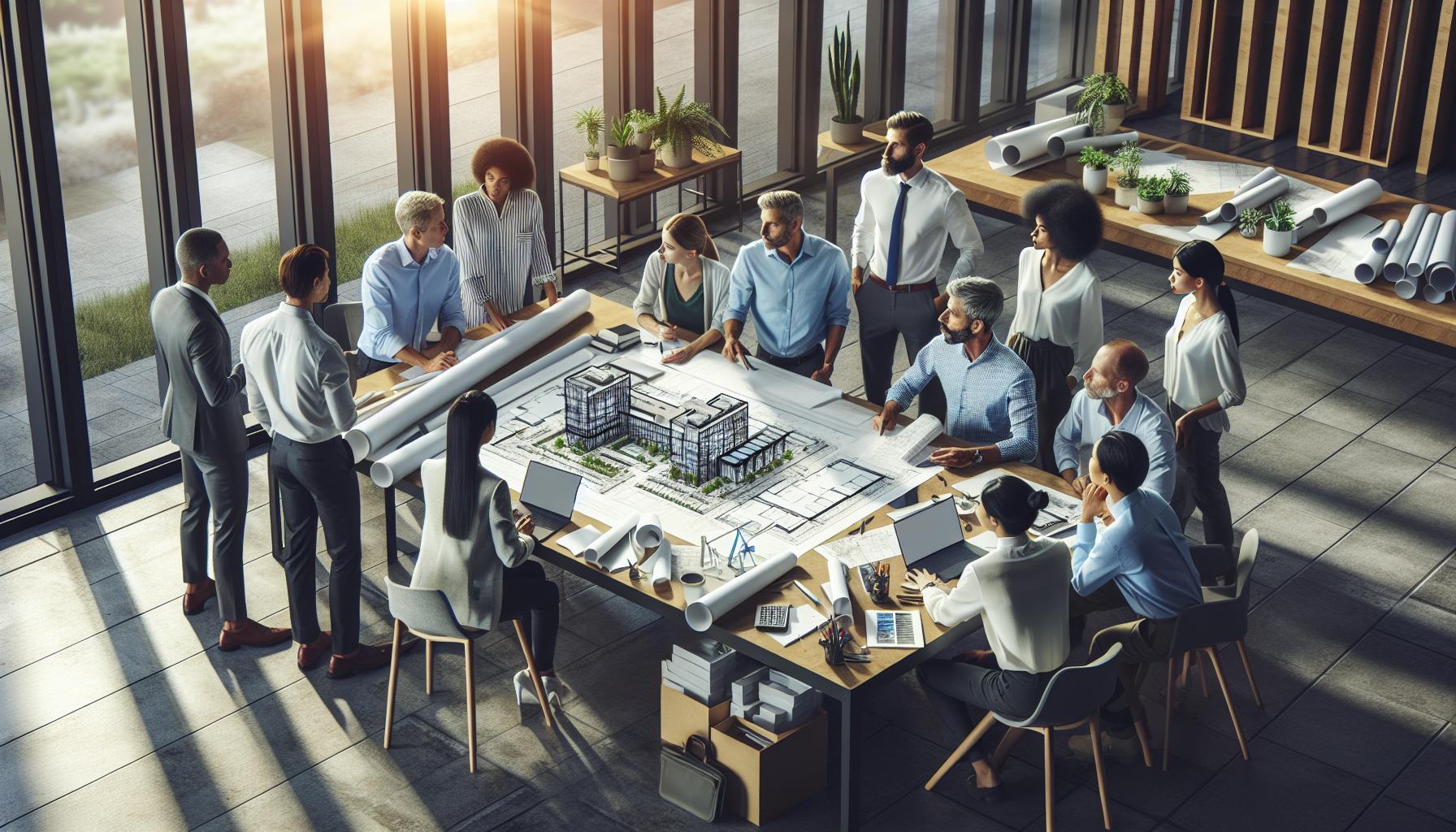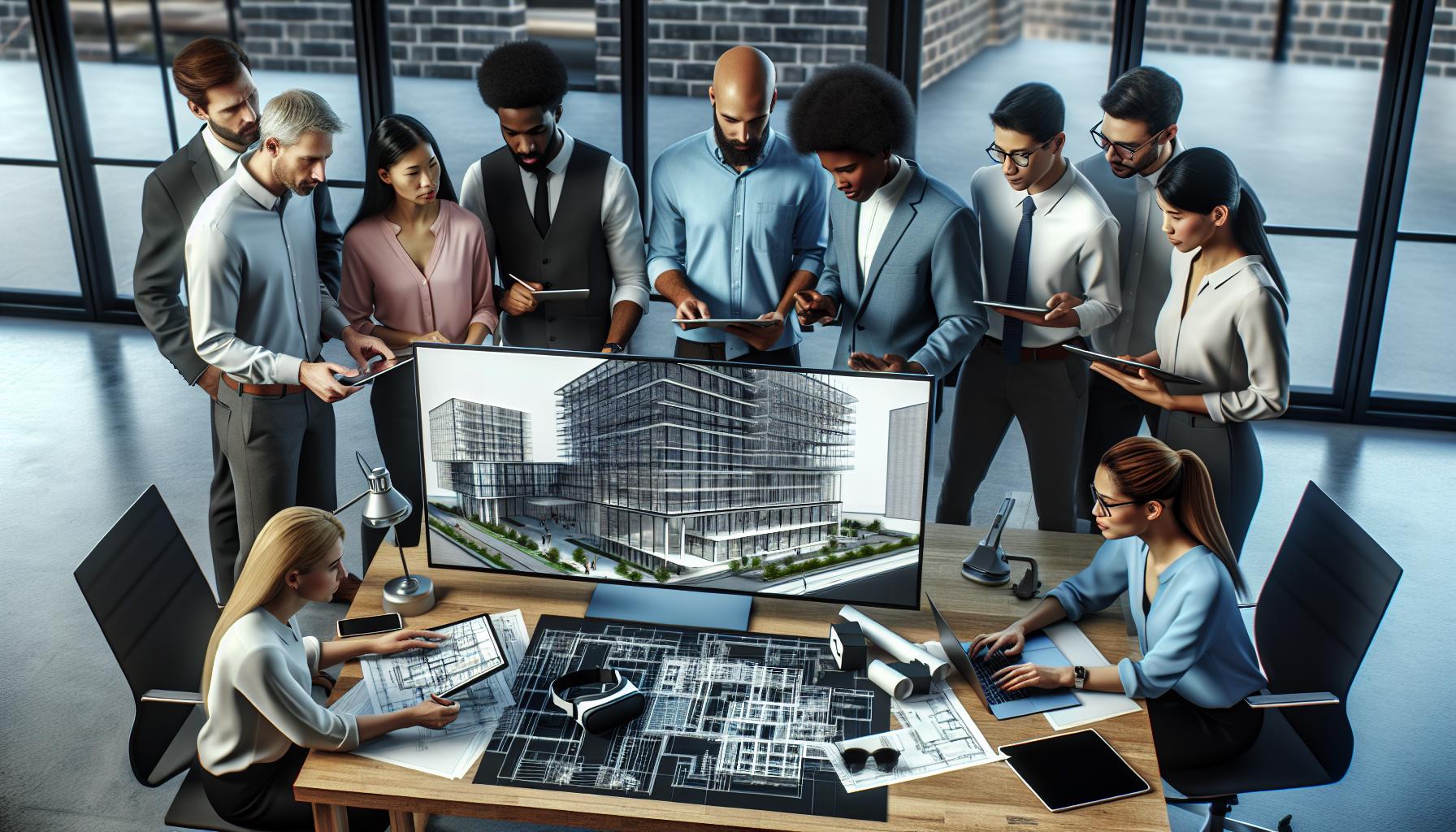In a world where buildings are no longer just four walls and a roof, integrative design is the superhero architects and architectural engineers never knew they needed. This approach transforms the mundane into the magnificent, combining aesthetics with functionality to create spaces that not only look good but work harmoniously. Imagine a building that breathes, dances with sunlight, and whispers sweet nothings about energy efficiency. Sounds dreamy, right?
Integrative Design: Building Systems For Architects and Architectural Engineers
Integrative design represents a holistic approach in architecture, focusing on the synergy between diverse systems. This methodology influences both the design process and the final outcomes of architectural projects. Collaboration among architects, engineers, and other stakeholders fosters innovation and encourages sustainable solutions.
Energy performance ranks high in the considerations of integrative design. Buildings designed under this philosophy often utilize advanced tools and technologies for energy modeling. These tools help predict a structure’s energy use, allowing teams to make informed decisions early in the process.
Another critical component involves the analysis of materials. Evaluating the environmental impact of various materials contributes significantly to sustainable outcomes. Integrative design promotes selecting resources that enhance durability while reducing the ecological footprint.
Incorporating user experiences enhances the effectiveness of integrative design. Spaces should support the well-being and productivity of occupants, which involves understanding their needs and preferences. Engaging users in the design process often leads to higher satisfaction with the final product.
Integrative design addresses the interconnectedness of systems within a building. Structural, mechanical, and electrical systems must function seamlessly for optimal performance. Through this interconnected focus, architects can create environments that are both efficient and responsive to changing conditions.
Ultimately, integrative design cultivates a deeper appreciation for the built environment. By valuing aesthetics alongside functionality, architects can create solutions that elevate ordinary structures into extraordinary spaces.
Importance of Integrative Design in Architecture

Integrative design plays a crucial role in shaping the future of architecture. This approach not only enhances the aesthetic appeal of buildings but also optimizes their functionality and sustainability.
Benefits for Architects
Architects gain several advantages from integrative design. Collaboration with engineers and other stakeholders fosters innovation, leading to creative solutions. Enhanced energy efficiency emerges from utilizing advanced tools for energy modeling, enabling architects to predict performance outcomes early in the design process. Increased user satisfaction stands out, as understanding occupant needs results in spaces that support well-being. This methodology encourages a holistic view, where aesthetics harmoniously merge with functionality, elevating the quality of architectural designs.
Benefits for Architectural Engineers
Architectural engineers experience significant benefits through integrative design as well. Seamless cooperation with architects allows for streamlined project workflows and improved communication. Enhanced system integration ensures that mechanical, electrical, and structural components work harmoniously. Access to advanced modeling technologies facilitates accurate energy analysis, supporting sustainable practices and reducing resource consumption. Architects and engineers create innovative designs that not only meet the aesthetic demands but also achieve superior performance and sustainability standards.
Key Principles of Integrative Design

Integrative design hinges on collaboration among stakeholders, ensuring that all voices contribute to the design process.
Collaboration and Communication
Effective collaboration unites architects, engineers, and clients, fostering innovative ideas. Frequent communication encourages transparency, mitigating misunderstandings that can derail projects. Team members utilize digital collaboration tools, enhancing interaction regardless of location. Regular meetings and workshops allow for exchange of insights and ideas, resulting in cohesive project goals. This synergy not only boosts creativity but also aligns priorities, facilitating timely decision-making. When everyone understands their roles and responsibilities, it streamlines workflows, ensuring a smooth design process.
Sustainability Considerations
Sustainability lies at the core of integrative design. Architects assess life cycle impacts of materials, aiming for minimal ecological footprints. Energy efficiency strategies promote the use of renewable resources, reducing reliance on non-renewable energy. Designers prioritize water conservation techniques, integrating systems that recycle and conserve water. By selecting locally sourced materials, projects lower transportation emissions, contributing to a reduced carbon footprint. Implementing sustainable practices results in buildings that respect the environment while enhancing occupant well-being. Ultimately, these choices create spaces that foster harmony between inhabitants and their surroundings.
Tools and Technologies for Integrative Design

Tools and technologies play a crucial role in integrative design, enabling architects and architectural engineers to create efficient and sustainable buildings. Leveraging advanced capabilities enhances collaboration and innovation.
Software Solutions
Popular software solutions streamline the design process for architects. Building Information Modeling (BIM) software allows for the creation of accurate 3D models, facilitating collaboration among all stakeholders. These tools support real-time updates, ensuring everyone stays aligned. Energy modeling software predicts building performance, guiding decisions that optimize energy efficiency. Additionally, sustainable design software evaluates material impacts, helping teams select eco-friendly resources. Users benefit from simulation tools that visualize design choices, enhancing decision-making for both aesthetics and functionality.
Emerging Technologies
Emerging technologies revolutionize integrative design. Virtual reality (VR) provides immersive experiences, enabling stakeholders to visualize projects before construction begins. Augmented reality (AR) enhances on-site collaboration by overlaying digital information onto the physical environment. Internet of Things (IoT) devices monitor building performance in real-time, prompting adjustments that enhance energy efficiency. Prefabrication technologies streamline construction methods, reducing waste and lowering costs. These innovations collectively advance the efficiency and sustainability of architecture, contributing to more resilient structures for the future.
Case Studies in Integrative Design
Integrative design demonstrates its effectiveness through various successful projects and the lessons learned from these experiences.
Successful Projects
Numerous projects exemplify the strengths of integrative design. One notable example is the Bullitt Center in Seattle, which utilizes advanced energy modeling tools. The building operates on net-zero energy, achieving a balance between energy consumption and generation. Another prominent case is the Bosco Verticale in Milan, showcasing synergy between architecture and urban ecology. This residential complex integrates vertical gardens to enhance biodiversity. Key design elements focus on resource efficiency and occupant comfort. Overall, these projects highlight how integrative design leads to exceptional architectural outcomes.
Lessons Learned
Important insights emerge from the practice of integrative design. Collaboration among disciplines significantly enhances project results. Early engagement of all stakeholders ensures thorough consideration of diverse perspectives. Emphasizing sustainability from the project’s inception contributes to better environmental outcomes. Effective use of modeling tools throughout the design phase clarifies potential challenges. Continuous feedback loops foster adaptability and innovation. Teams learn to prioritize performance metrics alongside aesthetic goals. These lessons underscore the benefits of an integrative approach in architectural projects.
Integrative design stands as a revolutionary approach in architecture and engineering. By fostering collaboration among diverse stakeholders it paves the way for innovative solutions that prioritize sustainability and user experience. This methodology not only enhances the aesthetic appeal of structures but also ensures they function efficiently within their environments.
As the industry evolves the importance of integrative design will only grow. Architects and architectural engineers who embrace this holistic approach will lead the way in creating buildings that are not just visually stunning but also environmentally responsible. The future of architecture lies in the synergy of systems and the commitment to sustainability that integrative design champions.



